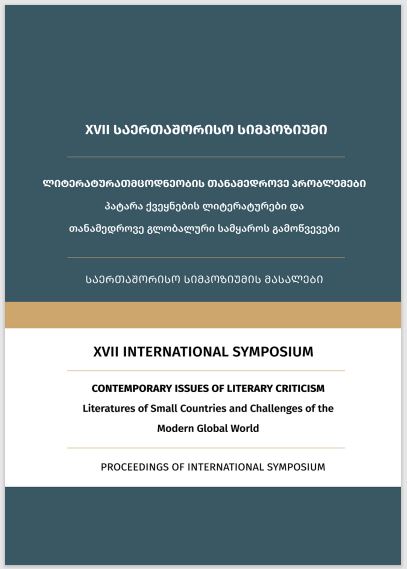Abstract
From the beginning of the 19th century, the Russian Empire colonized Georgia. The situation was especially difficult in the Khevi region, where the adventure of Georgian protagonists, Iago, Nunu and Koba, in Aleksandre Qazbegi’s novel “The Patricide,” took place. These protagonists are victims of this colonization.
After Iago and Koba rescued Nunu, who was forcibly married and then confined in a cave, they fled to Chechnya, joined to Shamil’s army, and fought against the Russian troops. As mentioned in the text, the Russian army consists not only of Russians and Cossacks, but also of other Caucasians, including Georgians. In the novel, two types of Georgians are represented: the “heroes,” – Iago, Nunu and Koba, – who have conscience, and the “anti-hero,” – Girgola, – who lacks it and serves Russian imperialism. Although main plot develops around the adventure of the “heroes,” drowing readers’ attention to them, Girgola’s phycology is also described in detail and is equally noteworthy. From this point, “The Patricide” possesses two characteristics of both chivalric and picaresque novels.
Additionally, the places where the “heroes” and the “anti-hero” operate are also notable. The former flee from Khevi to Chechnya, where the battles between Russian troops and Shamil’s army occur. In Chechnya, particularly in the Ichkerian forest, there are no highways (referred to in the novel as “national roads”). This circumstance makes it impossible for the Russian troops to move and battle effectively, giving Shamil’s army an advantage. In contrast, the “anti-hero,” Girgola remains in Khevi or Vladikavkaz (Dzaug),
where there is a highway connecting the cities. The Russian Empire controls the territory through this highway. These two topoi – the cities and the villages, and the highway itself / the roadless, “nomadic” space – are crucial for understanding A. Qazbegi’s works.

